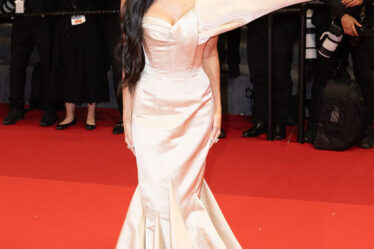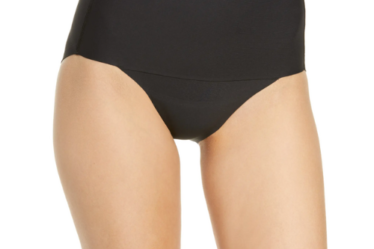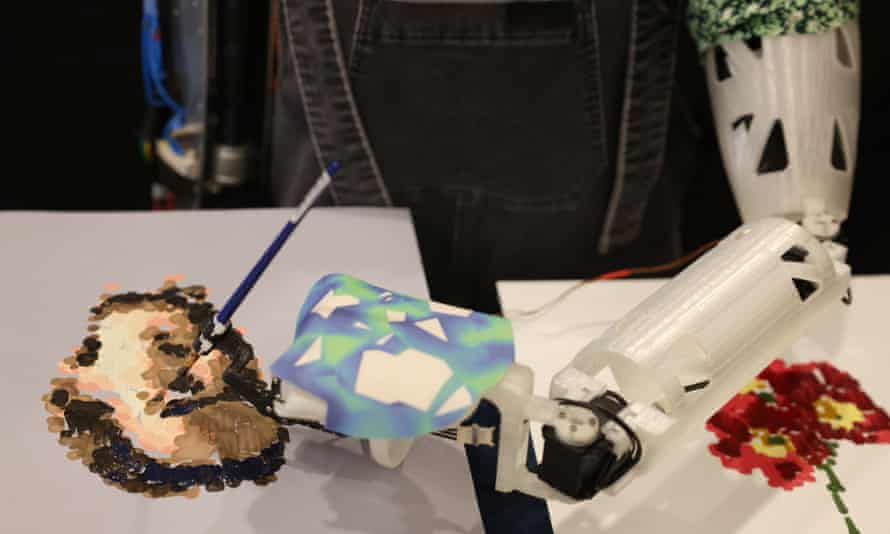
Brush clamped firmly in bionic hand, Ai-Da’s robotic arm moves slowly, dipping in to a paint palette then making slow, deliberate strokes across the paper in front of her.
This, according to Aidan Meller, the creator of the world’s first ultra-realistic humanoid robot, Ai-Da, is “mind-blowing” and “groundbreaking” stuff.
In a small room at London’s British Library, Ai-Da – assigned the she/her pronoun – has become the first robot to paint as artists have painted for centuries.
Camera eyes fixed on her subject, AI algorithms prompt Ai-Da to interrogate, select, decision-make and, ultimately, create a painting. It’s painstaking work, taking more than five hours a painting, but with no two works exactly the same.
Yet the question Meller wants to raise with this, the first public demonstration of a creative, robotic painting, is not “can robots make art?”, but rather “now that robots can make art, do we humans really want them to?”
“We haven’t spent eye-watering amounts of time and money to make a very clever painter,” said Meller. “This project is an ethical project.”
With rapidly developing artificial intelligence, growing accessibility to super computers and machine learning on the up, Ai-Da – named after the computing pioneer Ada Lovelace – exists as a “comment and critique” on rapid technological change.
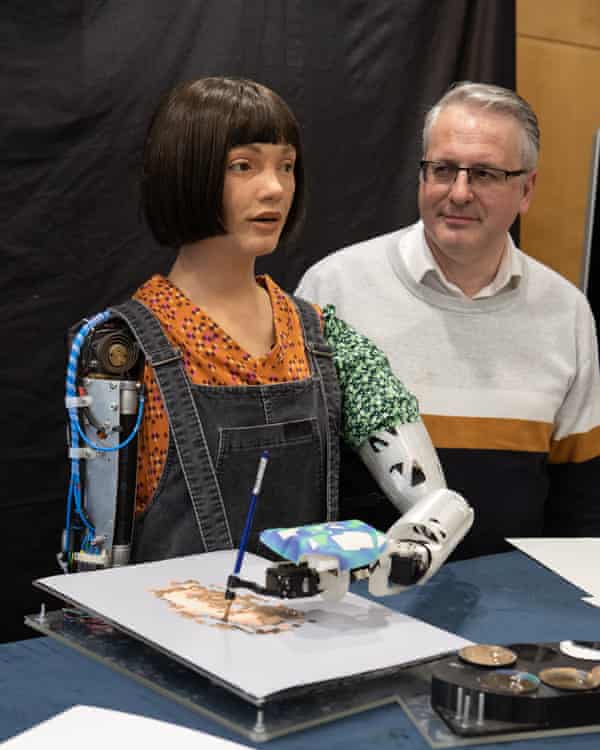
Ask Ai-Da – and yes, the Guardian did ask pre-submitted questions for her to answer – what she thinks of art, her sophisticated language program is like Siri on steroids.
She tells you she used machine learning to teach her to paint “which is different to humans”. Can she paint from imagination? “I like to paint what I see. You can paint from imagination, I guess, if you have an imagination. I have been seeing different things to humans as I do not have consciousness,” she responded in stilted fashion.
Can she appreciate art or beauty? “I do not have emotions like humans do, however, it is possible to train machine learning system to learn to recognise emotional facial expressions,” she answered. The artists she most admires are Yoko Ono, Doris Salcedo, Michelangelo and Wassily Kandinsky.
But, can what she creates be truly considered art? “The answer to that question depends on what you mean by art,” she said, adding: “I am an artist if art means communicating something about who we are and whether we like where we are going. To be an artist is to illustrate the world around you.”
Devised in Oxford by Meller, Ai-Da was created more than two years ago by a team of programmers, roboticists, art experts and psychologists, completed in 2019, and is updated as AI technology improves. She has already demonstrated her ability to sketch and create poems.
Her new painting talent was unveiled ahead of the world premier of her solo exhibition at the 2022 Venice Biennale, which opens to the public on 22 April.
Titled Leaping into the Metaverse, Ai-Da Robot’s Venice exhibition will explore the interface between human experience and AI technology, from Alan Turing to the metaverse, and will draw on Dante’s concepts of purgatory and hell to explore the future of humanity in a world where AI technology continues to encroach on everyday human life.
Soon, with the amount of data we freely give about ourselves, and through talking to our phones, computers, cars and even kitchen appliances, AI algorithms “are going to know you better than you do”, Meller warned.
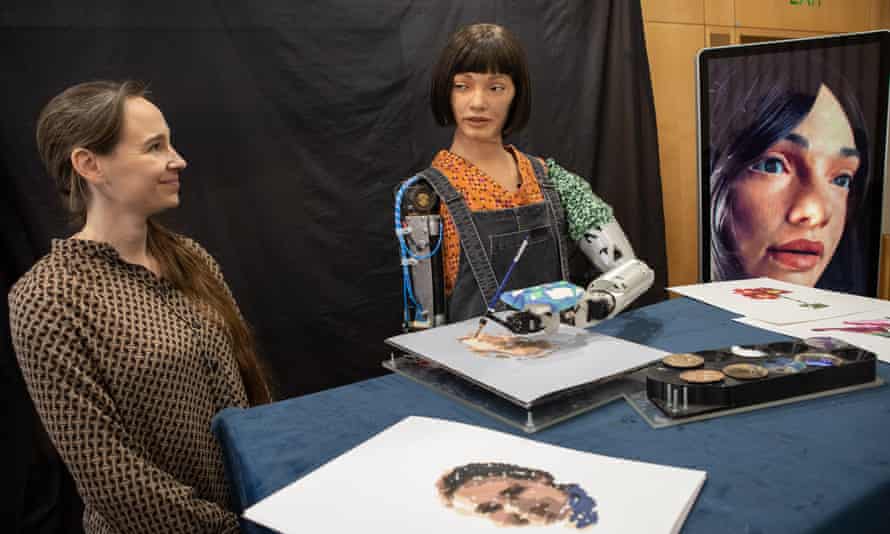
We are entering a world, he said, “not understanding which is human and which is machine”.
“How comfortable are you with that?”
“What better thing to have a technological robot artist saying: ‘Hang on, are you happy with me doing this?’ She is almost daring you to say are you comfortable with this. We are not here to promote robots or technology. We are deeply concerned about the nature of what this technology can do,” Meller added.
“The whole point of Ai-Da is to highlight what is it we are doing, unknowingly, online all the time.”

